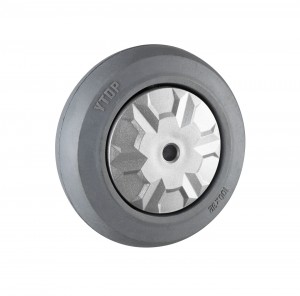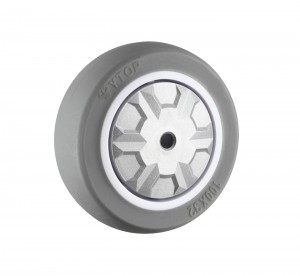As an important component of a wide range of equipment, furniture and tools, the material and performance of casters have a significant impact on the quality and performance of the overall product. Among the many types of casters, TPR casters and BR rubber casters are two common choices. Today will be a detailed comparison of the differences between these two types of BR vs. tpr casters.
Materials and Properties
First of all, TPR casters are made of thermoplastic rubber (TPR), a thermoplastic material with rubber elasticity, which does not need to be vulcanized and is environmentally friendly, non-toxic, and brightly colored. Due to the elasticity and abrasion resistance of TPR material, TPR casters usually have good abrasion, oil and weather resistance.
In contrast, BR rubber casters are made from butadiene rubber (BR), a synthetic rubber made from the polymerization of butadiene monomers, whose molecular structure is similar to that of natural rubber.BR rubber has good elasticity, abrasion resistance, cold resistance, and flex resistance.
Processing and performance
The processing performance of TPR material is better than that of rubber, and it can be processed by ordinary thermoplastic processing equipment without special vulcanization treatment. This makes TPR casters more efficient and less costly to produce.
However, BR rubber casters excel in dynamic performance, especially at high temperatures.BR rubber has excellent abrasion resistance, puncture resistance, and dynamic tear resistance, which allows BR rubber casters to maintain good performance in harsh environments.
Environmental protection and safety
In terms of environmental protection, TPR material has an advantage: TPR is an environmentally friendly and non-toxic material that complies with ROHS, REACH and other environmental standards, and can be widely used in medical devices, children’s toys and other fields. In contrast, although BR rubber is also an environmentally friendly material, it may be restricted by environmental regulations in certain application scenarios.
When selecting casters, comprehensive consideration needs to be made based on factors such as specific application scenarios, performance requirements and environmental regulations. For example, TPR casters may be a better choice in scenarios that require high productivity, low cost and high environmental requirements, while BR rubber casters may be more suitable in application scenarios that require higher dynamic performance and high temperature resistance.
Post time: Apr-24-2024


